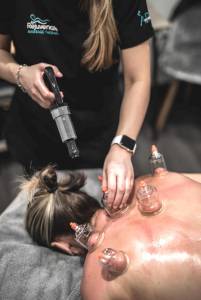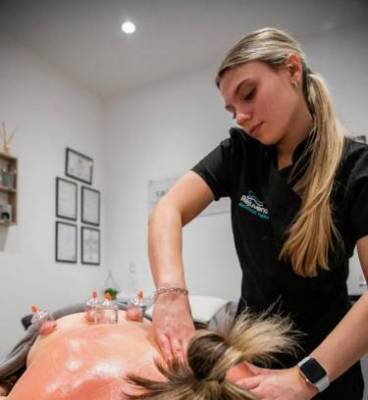What is the purpose of dry cupping?
Cupping therapy is an ancient form of alternative medicine in which a therapist puts special cups on your skin for a few minutes to create suction. People have cupping for many reasons, including to help with pain, inflammation, blood flow, relaxation and well-being, and as a type of deep-tissue massage.
What are the benefits of Dry Cupping on the back?
Cupping may ease symptoms of:
- Arthritis, including rheumatoid arthritis.
- Back pain, neck pain, knee pain and shoulder pain.
- Breathing problems, such as asthma.
- Carpal tunnel syndrome.
- Gastrointestinal disorders, such as irritable bowel disease (IBD).
- Headaches and migraines.
- High blood pressure (hypertension).


How often should you have Dry Cupping?
Clients can come in as often as two to three times a week for cupping, but it’s usually used in conjunction with massage.
Does Dry Cupping release toxins?
Cupping gives your body a boost in releasing those toxins. Focused blood flow helps your body by flushing built-up toxins through the lymphatic system.
What should I be careful of with cupping?
Cupping increases blood circulation to the area where the cups are placed.So baring this in mind … You should avoid cupping if you have:
- a sunburn.
- a wound.
- a skin ulcer.
- experienced recent trauma.
- an internal organ disorder.
- thinning skin.
what to expect after dry cupping.
The suction force from cupping breaks open tiny blood vessels under the skin. You may well have round bruise-like marks afterwards that will begin to fade anywhere from a few hours up to two weeks, depending on the depth of colouration.
what to avoid after dry cupping treatment.
For 4-6 hours after cupping, avoid exposure to:
- Caffeine, alcohol, sugary foods and drinks, dairy, and processed meats. These foods slow down your body’s ability to process the treatment.
- Hot showers, saunas, hot tubs and strong air conditioning. …
- Intense exercise.
- Cold and windy conditions.


